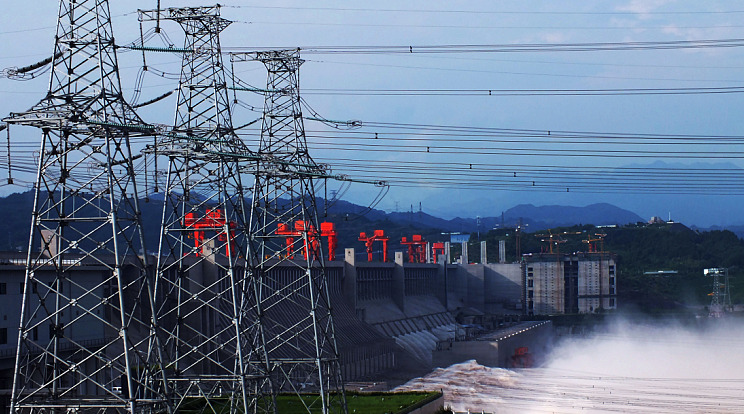10 Insights with Topic: New Energy
Given the inextricable links between energy-hungry Artificial Intelligence and renewables, energy storage and smart grids are a necessary “final mile solution” in the intensifying AI race. They provide the critical capability to store and dispatch huge quantities of uninterrupted renewable energy/power on demand without compromising emission reduction targets. In this regard, China is uniquely positioned to tackle the related challenges of AI and renewable energy with its rapid development and upgrades of energy storage systems and smart grids. In fact the country has long been studying intertwined strategic relationship between AI, technology and energy, and studiously incorporate such thinking into its Five Year Plans, and which are subsequently being rolled out as China’s East Data West Computing initiative. Further to our recent insight on China’s “power infrastructure” as the critical enabler for AI-development, in this article, we zoom in on China’s capabilities and investment opportunities in energy storage as the linchpin that holds the last mile solution, and matches renewable energy production with industrial demand in China’s journey to a high-tech, modern society.
Sep 11, 2024
China markets witnessed strong rally since Oct 2022 trough upon China reopening and covid policy pivot, and we start to see investor flows rotating from offshore to A-shares which are expected to outperform with a longer run for rally. Where are we in China’s reopening trajectory? Who are the policy supported sector leaders well placed to outperform? These are the common questions frequently asked by our clients. In this article, we discuss the 10 most frequently asked questions that came up in our recent conversations with investors and allocators, and share more color about pockets of opportunities as China reopening evolves into the second act for economic growth recovery.
Mar 17, 2023
Big, long-term trends could drive Developed Market bond yields much higher than the cyclical peaks that the market is currently pricing in. There are cycles and there are secular trends. If the super cycle of rates and yields has turned – off deep negative inflation-adjusted levels – then the lesser cycles could mean- revert a lot higher around long-term uptrends. And we are at this juncture at the moment, as the negative yielding bonds have literally disappeared - the global stock of negative yielding bonds had gone from a peak of US$18.4 trillion late in 2020 to zero recently. What are the true implications behind this abrupt turn of tides? In this article, our Senior Advisor Say Boon Lim discusses the big drivers for potentially much higher rates and yields for this year, and areas we are spending a lot more time monitoring, as the longer-term outlook could be far worse than just a mean reversion in nominal rates and yields as we may also be in the midst of a secular mean reversion in real government bond yields and corporate credit yields.
Jan 17, 2023
Sichuan has a very real climate change issue to manage this year. After extreme heatwave and drought causing power rationing for industrial users for two weeks, the province is now quickly re-gearing for Level IV flood emergency alert. While most factories are able to resume production now, should we be concerned especially with memories from the power crunch actions last year? What would be the impacts and ripple effects we should pay attention to? In this article we reviewed the background triggering the Sichuan situation, and why we believe the power rationing events are more pre-emptive in nature and energy security is very carefully managed in the planned economy of China.
Aug 31, 2022
After lithium, coal and pork, polysilicon appears to be the next in line for potential government price interventions. In fact, polysilicon prices which have been on nine consecutive weeks of spiking spree, have reached 10-year high and the high prices have caused severe supply chain disruptions and suppressed domestic demand for solar panels – and in the process slow down the solar infrastructure build out in China. Such price intervention thus is envisaged to be a positive regulating event, that would shift the industry dynamics from upstream biased to more midstream and downstream actors, to rebalance the supply chain economics for long run sustainable growth of the industry ecosystem. In this article, we shall analyze this in greater details, and explain why despite the headline concerns it would be a positive event for the sector leaders including related constituents in the Premia ETFs, while the polysilicon market is expected to remain tight throughout the year due to persistent strong global demand and supply shortages.
Aug 04, 2022
In the US the “triple peaks” in economic growth, earnings growth and policy stimulus will likely result in much lower returns for US equities in 2022. The persistently high inflation – which will likely run hotter in the US than Europe and Japan – is already causing greater volatility as US equities are put on tenterhooks over the timing and magnitude of rate hikes. Meanwhile US Dollar could weaken on inflation rather than strengthen on higher Treasury yields. On the other hand, Emerging Markets, usually do better during periods of Dollar weakness but this time we could see a new twist - this favours China, supported by easier financial conditions. On top of all these, how is the Omicron Virus going to impact the global markets and what are the implications for global asset allocations in 2022? Why ASEAN would be a good diversification within Emerging Markets? Further to Part 1 of our 2022 outlook piece earlier, in this Part 2 sequel our Senior Advisor Say Boon Lim laid out the scenarios and discussed how we can reposition for the global shifts accordingly to address the transition to tightening and pivot from US equities.
Dec 16, 2021
After the smooth sail in 2020, 2021 has been a challenging year for investors with heightened volatility across global markets. Asia Pacific ex-Japan equities, Emerging Asia and in particular China had a good start until mid-February, but then returned all the gains and stayed largely flat on increasing regulatory headwinds in China, extended COVID-lockdowns in southeast Asia, threats of power crunch and credit defaults among Chinese property developers. On the contrary, benchmarks like S&P500, Nasdaq and Euro Stoxx 50 all reached new highs during the year, and Nikkei 225 hit its highest point in three decades. Meanwhile, the divergence in the fixed income markets went the other way, as global fixed income market suffered a mid-single-digit percentage loss in return, while China sovereign bonds bucked the trend with a high-single-digit percentage gain. Where do we go from here? Is the Omicron virus going to reset the path to 2020? And how do we decipher impacts of the Fed tapering, inflation and interest rate expectations, and economic growth and policy trends in China? In this article, our Partner & Co-CIO David Lai assesses the world economics and markets current standings, focusing on China and Asia, and discusses how to reconfigure for new opportunities that arise into 2022 as a year of the new normal.
Dec 08, 2021
The recent regulatory crackdowns and power suspension in China have unnerved many international investors. How to configure for opportunities under the lens of common prosperity and China’s commitment for carbon neutrality by 2060? In this article, we compare the Premia China STAR50 ETF (3151.HK) and Premia CSI Caixin China New Economy ETF (3173.HK), and discuss why they are useful implementation tools to capture long term opportunities in hardcore technology and strategic new economy sectors under the 14th Five Year Plan.
Oct 12, 2021
According to the United Nation Environment Programme, an inclusive green economy is an alternative to today's dominant economic model, which exacerbates inequalities, encourages waste, triggers resource scarcities, and generates widespread threats to the environment and human health.
Jan 22, 2021
To summarize the year of 2020, the opening lines from Charles Dicken’s A Tale of twin cities sounds like an accurate description. It was certainly the best of times and the worst of times. Global equities have been doing reasonably well with developed market up by 12.0% and emerging market up by 11.7%. Fixed income managed to gain by 7.4% whilst gold price was up by 19.1%. On the other hand, real economy has been suffering from the pandemic with almost all major economies getting into recession. International Monetary Fund sees the world would contract by 4.4% in total output, the worst crisis since the 1930s Great Depression with -5.8% among advanced economies and -3.3% on developing countries.
Dec 02, 2020









